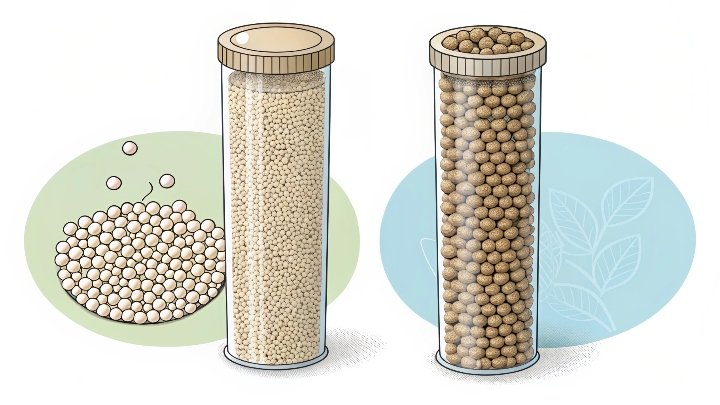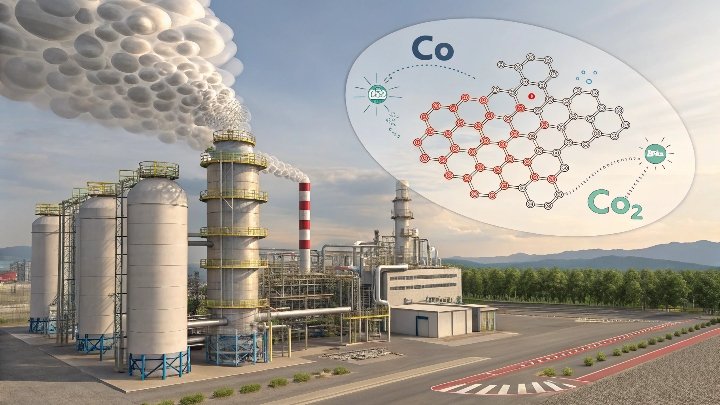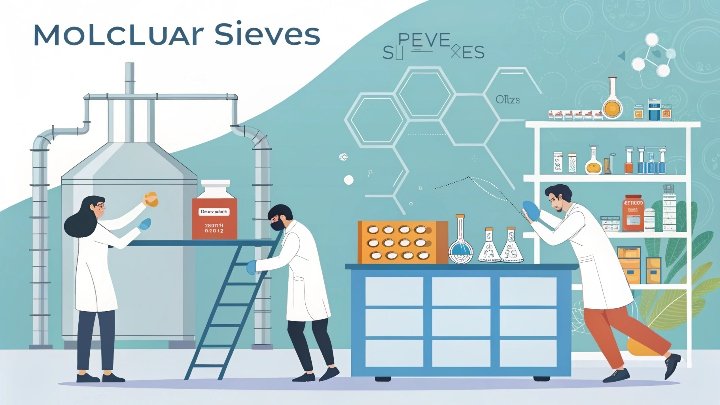Molecular sieves are becoming indispensable across various industries. But, how did a humble kitchen desiccant evolve into a high-tech solution that’s revolutionizing chemical engineering? Let's explore.
Molecular sieves, initially used as simple desiccants in kitchens, now play a crucial role in industries like petrochemicals, pharmaceuticals, and food processing. Their selective adsorption properties make them indispensable in modern chemical engineering.
Molecular sieves have moved far beyond their humble beginnings as kitchen desiccants. As industries evolve, these advanced materials are redefining chemical separation and purification processes. Let's dive into how they’ve gone from a simple moisture control tool to a high-tech marvel in industrial applications.
From Kitchen Helper to High-Tech Hero: The Evolution of Molecular Sieves?
Molecular sieves, once found in kitchens to keep moisture at bay, are now a cornerstone in advanced chemical engineering. How did they evolve into such a versatile tool?
The journey of molecular sieves from kitchens to industrial plants shows their growing importance in various industries, thanks to their precision in filtering molecules by size and polarity.
The Beginning: Kitchen Desiccants
Molecular sieves first gained attention for their ability to absorb moisture. This made them a common choice in kitchens and packaging. The key feature? Their ability to selectively adsorb water molecules, keeping products dry and fresh.
Expanding Horizons: From Household Use to Industrial Applications
However, their potential extended far beyond household use. As industrial needs grew, so did the application of molecular sieves. Industries required more precise and efficient methods for separating gases and liquids. Molecular sieves, with their ability to filter molecules based on size, emerged as a key technology.
Chemical Engineering Marvel
Today, molecular sieves are used in the most advanced chemical processes. From natural gas purification to hydrogen production, their ability to remove specific molecules has transformed industries. Their evolution from simple desiccants to complex industrial tools showcases their growing role in the chemical engineering field.
Precision in Petroleum: How Smart Sieves Are Capturing Billions in Value?
In the petroleum industry, where precision matters, how are molecular sieves contributing to massive savings and efficiency?
Molecular sieves have revolutionized petroleum refining by improving gas separation, drying, and purification. Their precise filtration abilities capture billions in value by enhancing product quality and reducing operational costs.
Key Application in Petroleum
In petroleum refining, the need for gas separation and purification is crucial. Molecular sieves, especially types like 3A, 4A, and 13X, are used for separating impurities like water, carbon dioxide, and hydrogen sulfide from natural gas and other petrochemical products.
Why Molecular Sieves Matter in Petroleum Refining
The key to their success lies in their selective adsorption. By targeting specific molecules, molecular sieves can purify natural gas to the required standards. This reduces the risk of pipeline corrosion and enhances the energy content of the gas.
Smart Sieves in Action
Smart sieves go beyond basic separation. They improve energy efficiency by reducing waste, enhancing reaction times, and lowering operational costs. In some cases, they have helped reduce energy consumption by up to 40% in refining processes, showcasing the financial and operational benefits.
Case Study: How Smart Sieves Slashed Energy Costs by 40% in Pharma Production
Can molecular sieves really reduce energy costs? Let’s look at a real-world example in the pharmaceutical industry.
Molecular sieves in pharmaceutical production have slashed energy costs by up to 40%. Their efficiency in drying solvents and removing moisture has proven to be a game-changer for pharma companies.
The Pharma Challenge
In pharmaceutical production, maintaining the integrity of active pharmaceutical ingredients (APIs) is crucial. Moisture can degrade these ingredients, reducing their efficacy and shelf life. Traditional drying methods are energy-intensive, making them costly and inefficient.
The Molecular Sieve Solution
Molecular sieves, specifically 3A and 4A types, have been adopted in pharma manufacturing to remove moisture from solvents and raw materials. Their high adsorption capacity and selective moisture removal capabilities make them an ideal solution for preserving product quality without the need for excessive energy use.
Energy Savings and Efficiency Gains
By integrating molecular sieves into production lines, pharmaceutical companies have drastically reduced their energy consumption. In one case study, energy costs were reduced by 40% due to the more efficient moisture removal process. This led to faster production cycles and lower overall operating costs.
Conclusion
Molecular sieves have evolved from kitchen helpers to high-tech heroes in industries like petrochemicals, pharmaceuticals, and more. Their precision in adsorption is changing the way we approach chemical engineering, saving energy, and driving efficiency.






